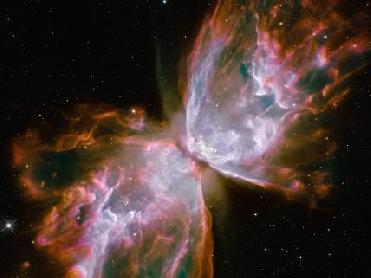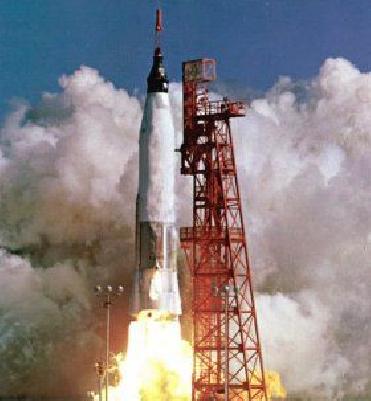
'Butterfly' emerges from stellar demise in planetary nebula NGC 6302. Image Credit: NASA
WASHINGTON (BNS): NASA�s Hubble Space Telescope has captured several awe-inspiring images of the cosmos, which have been unveiled by the US space agency.
Topping the list of new views are colorful, multi-wavelength pictures of far-flung galaxies, a densely packed star cluster, an eerie �pillar of creation,� and a �butterfly� nebula, NASA said on Wednesday.
The images have been taken by four of Hubble�s six operating science instruments. These instruments enable the Space Telescope to study the Universe across a wide swath of the light spectrum � from ultraviolet all the way to near-infrared.
In addition, scientists released spectroscopic observations that slice across billions of light-years to probe the cosmic-web structure of the Universe and map the distribution of elements that are fundamental to life as we know it.
With the unveiling of the new images, astronomers at NASA have declared the Hubble Space Telescope as �a fully rejuvenated observatory�.
�This marks a new beginning for Hubble,� said Ed Weiler, associate administrator for NASA's Science Mission Directorate at NASA Headquarters in Washington. �The telescope was given an extreme makeover and now is significantly more powerful than ever, well-equipped to last into the next decade.�
The new instruments are more sensitive to light and, therefore, will improve Hubble's observing efficiency significantly. It is able to complete observations in a fraction of time that was needed with prior generations of Hubble instruments. The space observatory today is significantly more powerful than it ever has been, the US space agency said.
NASA now plans to expand the space observatory�s search horizon by focusing on the deepest-ever near-infrared portrait of the Universe to reveal never-before-seen infant galaxies that existed when the Universe was less than 500 million years old. Other planned observations will attempt to shed light on the behavior of dark energy, a repulsive force that is pushing the Universe apart at an ever-faster rate.
Besides, observations will also range from studying the population of Kuiper Belt objects at the fringe of our solar system to surveying the birth of planets around other stars and probing the composition and structure of extrasolar planet atmospheres, NASA said.
 Previous Article
Previous Article Next Article
Next Article












The Indian Air Force, in its flight trials evaluation report submitted before the Defence Ministry l..
view articleAn insight into the Medium Multi-Role Combat Aircraft competition...
view articleSky enthusiasts can now spot the International Space Station (ISS) commanded by Indian-American astr..
view article